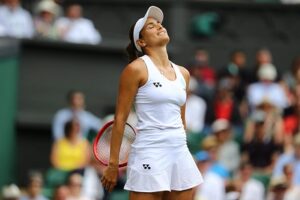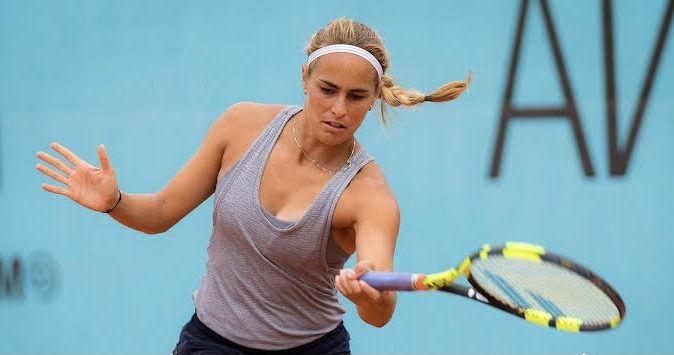Tennis Court to Marathon Track: Marathon running has helped former tennis player Monica Puig. After retiring at 28 due to shoulder issues, Puig used marathons to stay motivated, overcome depression, and find a new purpose. This article discusses Puig’s transition from tennis to marathon running, including her successes, challenges, and life-changing effects.
The Emotions of Victory
Puig’s tennis career was marked by numerous victories, each accompanied by a sense of relief, excitement, and satisfaction. However, following her retirement, she sought to revisit those positive emotions without relying on tennis. Turning to marathon running, Puig discovered a new outlet for achieving personal milestones and experiencing the exhilaration of crossing the finish line. Even without a tennis racket in her hand, she found herself overcome with emotion, often shedding tears of joy and disbelief at her own achievements.
A Different Kind of Triumph
Completing a marathon is a unique blend of similarity and dissimilarity to winning a tennis match. While the stakes in tennis were higher, with rankings, global recognition, and prize money on the line, the personal satisfaction Puig derives from running has endured. Running has helped alleviate the lingering pain of retirement, serving as a reminder that she didn’t succumb to depression and sadness when her tennis career ended prematurely. Instead, Puig found the strength to pick herself up and pursue a new passion that keeps her motivated, physically fit, and fulfilled.
From Punishment to Passion
As a tennis player, Puig viewed running as a form of punishment rather than enjoyment. However, during her rehabilitation periods, running became a means of clearing her mind and maintaining her physical well-being. Over time, Puig gradually increased the distance of her runs, from three miles to five, and then to longer distances, eventually venturing into half and full marathons. What started as a coping mechanism turned into a genuine passion, allowing Puig to rediscover her love for endurance sports.
Beyond Marathons Triathlons and New Horizons
With her sights set on further challenges, Puig has not only embraced marathon running but also set her sights on triathlons. She plans to compete in the remaining marathon majors, including races in Chicago, Berlin, and Tokyo. Additionally, Puig aims to complete her first half Ironman, a grueling test of endurance that includes swimming, cycling, and running. Despite transitioning from a top-ranked tennis player to an amateur runner and triathlete, Puig believes her experience in tennis has equipped her with the mental fortitude and discipline necessary to tackle these new athletic endeavors.
A New Life, a New Way of Doing Things
For Puig, the end of her tennis career was marked by elbow and shoulder injuries that required multiple surgeries. The constant physical pain and mental toll of rehabilitation and prolonged absence from competitive tennis took their toll. Puig vividly describes the feeling of pushing a stone up a mountain, with the stone continuously squashing her as she struggled to progress. Despite her determination to return to the sport, her surgeon’s words resonated: her shoulder was not improving, and continued operations were not a viable solution.
However, Puig remains connected to tennis through her work as a broadcaster. Engaging with the sport in a different capacity has enhanced her understanding of the game and deepened her appreciation for the intricacies of tennis strategy and technique. Although she misses playing competitively, Puig’s involvement as a commentator allows her to contribute her newfound knowledge and insights to the sport she loves.


READ MORE: Vondrouová Makes History: Reaches Wimbledon Final with Dominant Victory
Accepting Limitations and Setting New Goals
Accepting the limitations of her body, Puig is focusing on refining her swimming technique to endure the challenges of Ironman-distance triathlons. She’s learned to listen to her body and rest when she’s tired. Puig now understands the importance of self-care and mental and physical health, unlike her previous comeback attempts, where she played through pain.
A Lifelong Pursuit
Inspired by the many triathletes in their fifties and sixties, Puig hopes to compete in triathlons for the rest of her life. Puig’s determination and unwavering spirit help her overcome any obstacles. She sees no limits in running and triathlons with her newfound purpose and can-do attitude.
Conclusion Of Tennis Court to Marathon Track
Monica Puig’s journey from tennis to marathon running is a testament to her resilience, determination, and ability to find new avenues of fulfilment and triumph. By embracing the challenges of marathon races and setting her sights on triathlons, Puig has redefined her identity and found solace in a world beyond tennis. Through running, she has conquered physical and mental obstacles while discovering a new sense of purpose and self. Puig’s story is an inspiration to athletes and individuals facing career transitions, demonstrating the power of perseverance and the potential for new beginnings in unexpected places.
Our Reader’s Queries
What is the perimeter of a tennis court?
The perimeter of a tennis court measures 228 feet. The length is 6 feet longer than double the width.
How many laps is a mile on track?
Run four laps around a track to cover a mile distance. Push yourself for the first lap (approximately .25 mile), then take it easy for the second lap (.25 mile). Repeat this pattern for a total of 4-6 rounds.

